
Delicious Yamagata rice
Delicious rice that was grown in the beautiful four seasons of Yamagata's natural climate and made by the hard work of the farmers. Please give it a try.
Delicious Yamagata GUIDE BOOK
Click Here ▲
Striking "Rice Bigness", "Shining Whiteness", "Scent",and "Glutinousness". Rice itself is special meal.
Each one bite leads you to supreme bliss.
Tsuyahime is safe, fabulously delicous, and special rice that agricultural craftspersons in Yamagata have grown with their devotion.
We offer such Tsuyahime to customers who love "White Rice" more than anything else.

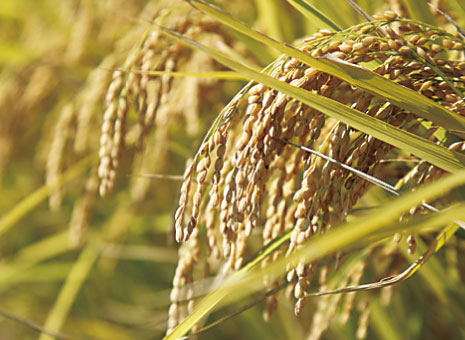
Yamgata is a veritable kingdom of fruit! An abundance of flavors are available throughout the year.
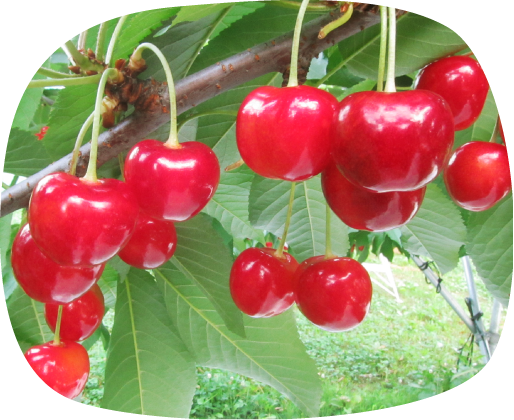
Cherries
(Yamagata Beniou, Sato Nishiki, and Benishuho)
The ruby colored jewel of the orchard.
The best season
Greenhouse cherries: Late April – Early June
Outdoor-grown cherries:
Yamagata Beniou cherries: Last June – Early July
Sato Nishiki cherries: Late June
Beni Shuho cherries: Early July
Features
Cherries are one of the typical early summer fruits. Yamagata Prefecture accounts for about 75% of Japan’s cherry production(2020). Glowing a brilliant ruby, Yamagata’s cherries have an abundance of sweet juice, which will fill your mouth as you bite into the flesh.
Some cherry-based sweets are also available.
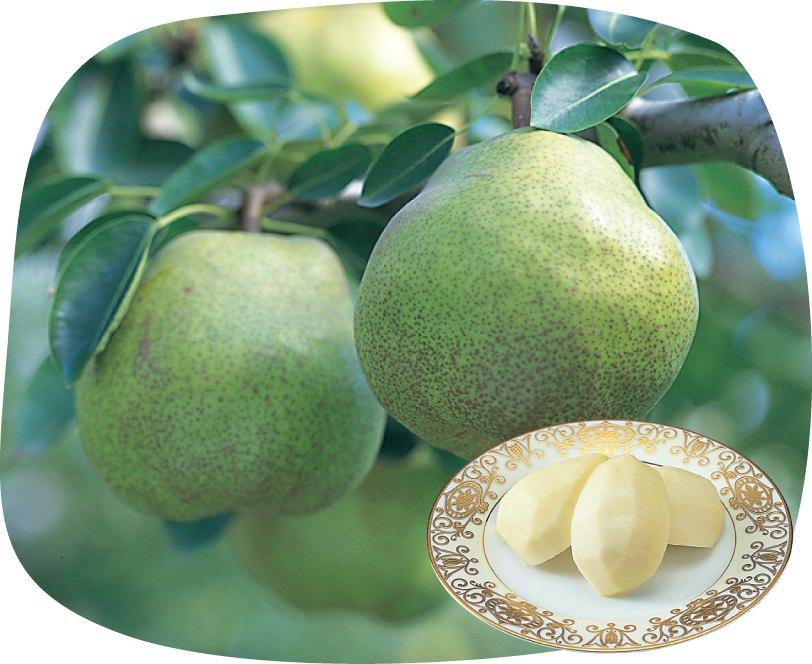
Pears
(La France)
A wonderful fragrance and melt in your mouth flavor.
The best season
Late October - December
Features
Yamagata Prefecture is the highest European pear producer in Japan. Among the varieties of pears, La France is particularly exquisite, known as the Queen of Fruits.
Contrary to its rough appearance, La France exhibits a dense sweetness, creamy texture and elegant aroma, delighting your taste buds.
Many different sweets made with La France are also available.
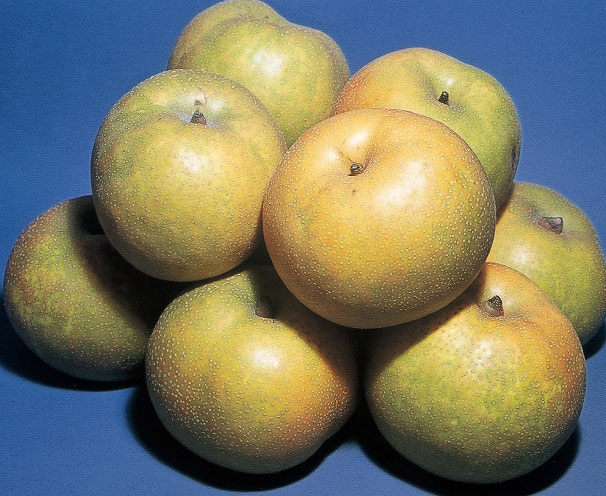
Japan Pears
The best season
Early September – Early October
Features
Yamagata Prefecture has cultivated Japanese pears for over 250 years.
Pears grown mainly in the Shonai region within the Prefecture include Kosui and Hosui pears, which are characterized by their juicy, crisp flesh.
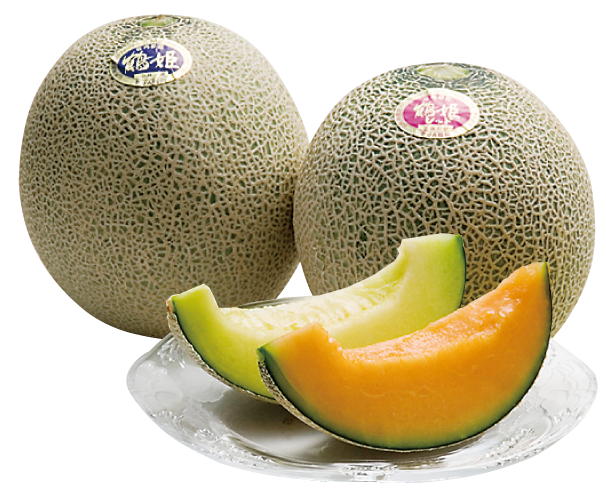
Melons
(Shonaisakyumelon)
Full bodied and with a refreshing sweetness.
The best season
Outdoor-grown netted melon: Late June – Mid August
Earl′s-type melon: September - October
Features
Strong sunlight during the daytime, along with the coolness of the night, makes melons taste sweeter.
Yamagata Prefecture cultivates both outdoor-grown netted melons and Earl’s-type melons, using greenhouses as needed.
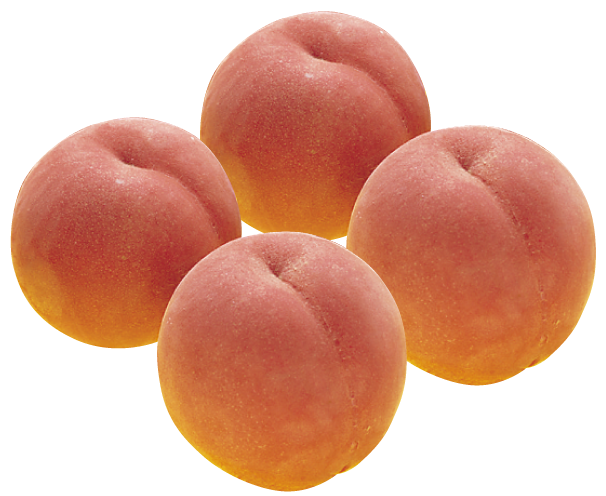
Peaches
(Kawanakajima Hakuto and Akatsuki)
Fresh, juicy, and bursting with flavor.
The best season
Late August – Early September
Features
Yamagata Prefecture is the northernmost among the nation’s principal peach-growing regions, as the fruit prefers a temperate climate.
The coolness of the summer nights in Yamagata helps produce sweet, flavorful and juicy peaches.
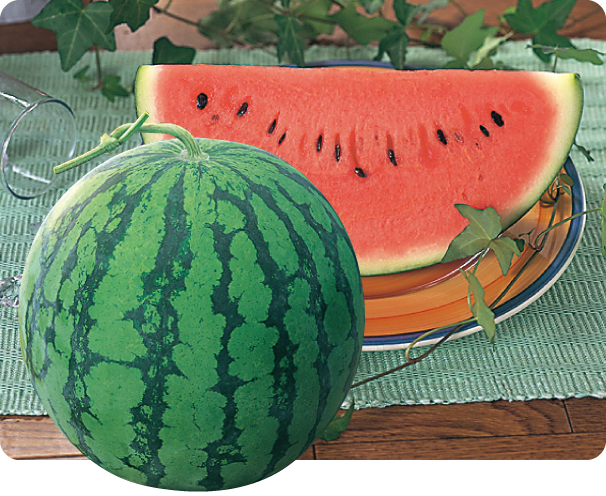
Watermelons
Unrivaled crispness and sweetness.
The best season
Small size: Early July – Early August
Large size: Mid July – Late August
Features
Watermelons are one of Japan’s summer features.
Yamagata Prefecture ranks first within Japan in watermelon shipments in summer - July and August; and ranks third in the nation’s watermelon production(2020).
A large temperature difference between day and night improves the flavors of watermelons.
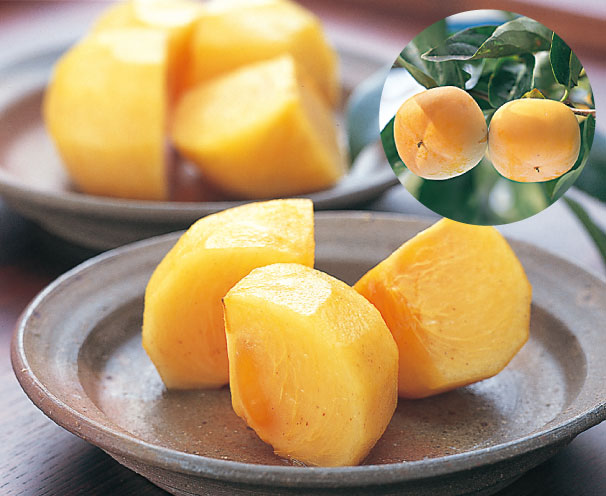
Persimmons
(Shonaigaki/Hiratanenashi)
Sugar content 15%! Seedless and incredibly sweet.
The best season
Early October – Early November
Features
Grown in Yamagata Prefecture are square-shaped and seedless persimmons with a pleasing flavor and a very sweet taste. Among a variety of fruits, persimmons are particularly rich in vitamins and carotene.
Yamagata Prefecture has cultivated persimmons since the Meiji period.
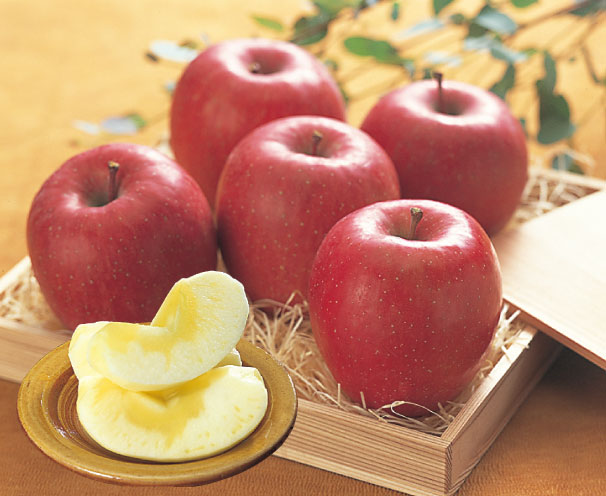
Apples
(Fuji and Shuyo)
These apples are shockingly sweet!
The best season
September – Early December
Features
Yamagata Prefecture is the fourth largest apple producer in Japan(2020).
Fuji apple, a predominant variety grown in the Prefecture, possesses a juicy texture with a high amount of nectar or mitsu (transparent yellow flesh) inside, which you can fully enjoy.
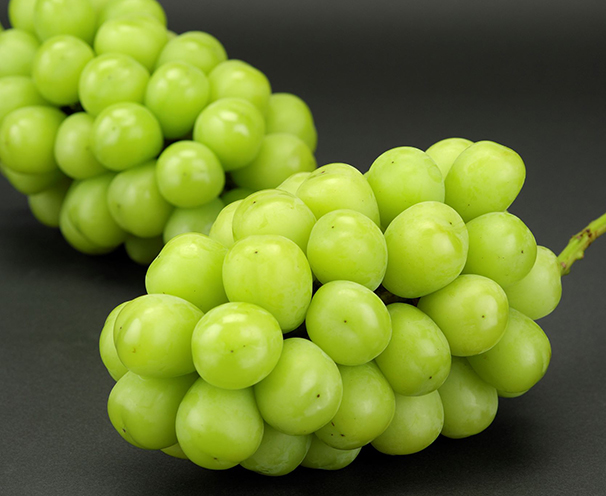
Grapes
(Delaware and Shine Muscat)
Very popular and sweet as honey.
The best season
Delaware grape: late July
Large grape (Kyoho grape, etc.): Late September – October
Shine Muscat: September - December
Features
Yamagata Prefecture has a long history of grape cultivation dating back to the early Edo period. Experiencing drastic changes in temperature between night and day, the Prefecture is a perfect place to grow grapes.
Different varieties of grapes, from one with small berries to one with large berries, are produced in Yamagata Prefecture.
Yamagata is home to healthy vegetables overflowing with flavor, grown in both green houses and in fields.

Tomatoes
Delicious Yamagata tomatoes!
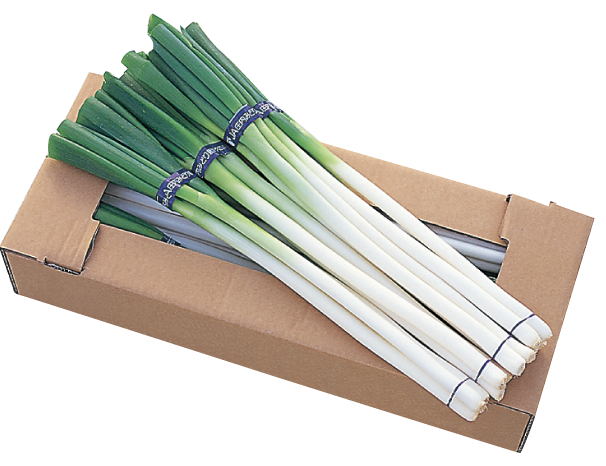
Leek/Green Onion
(Naganegi)
White, soft, and straight
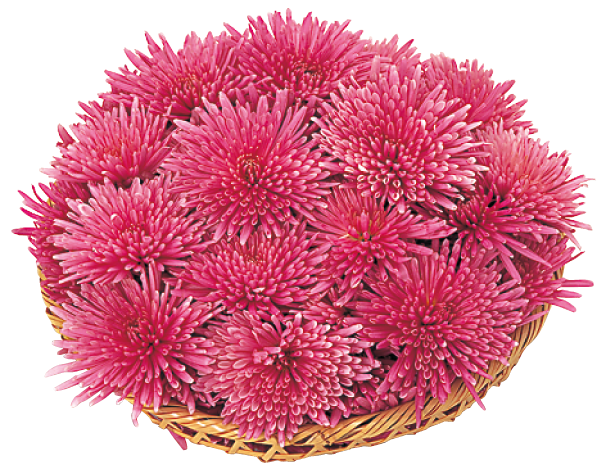
Edible Chrysanthemums
(Mottenohoka)
It's unthinkable not to know about these edible flowers, with a Japanese name that means "unthinkable"(mottenohoka)!
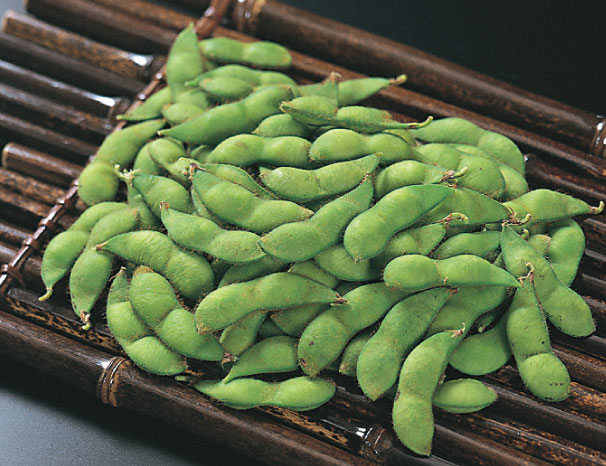
Edamame(Baby Soybeans)
Including Varieties Like Dadacha-mame and Hiden
These extravagant edamame are renowned as the best in Japan.
The best season
Late July – Early October
Features
Yamagata Prefecture is Japan’s second largest producer of green soybeans or edamame(2020).
A wide variety of Edamame are shipped to market from late July until early October.
Savor Edamame from Yamagata Prefecture, where delicious tastes are always put first.
Frozen Edamame and a large choice of Edamame-based sweets are also available.
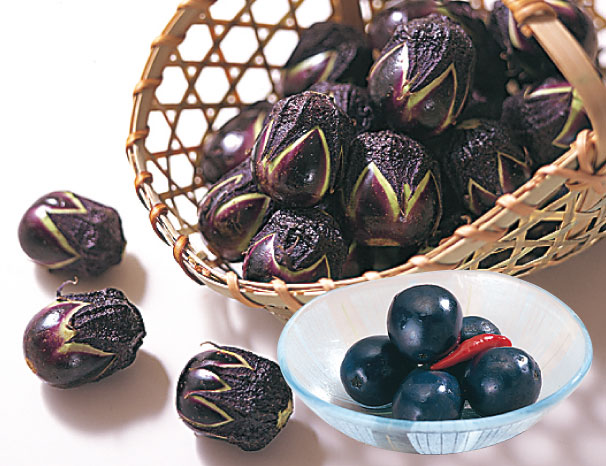
Round Eggplant
(Marunasu)
Great for overnight pickling when in season!
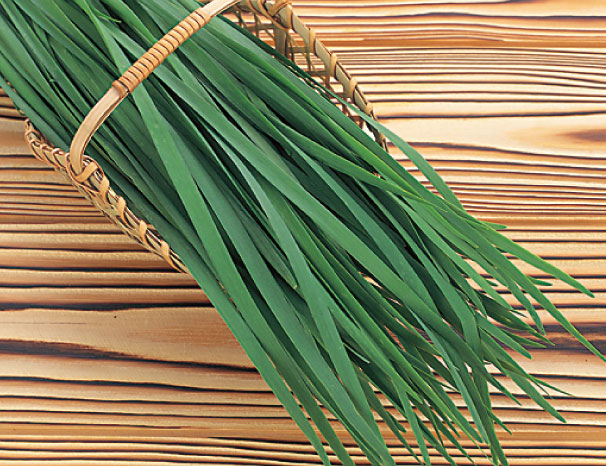
Garlic Chives
(Nira)
Helps to keep skin healthy and beautiful!
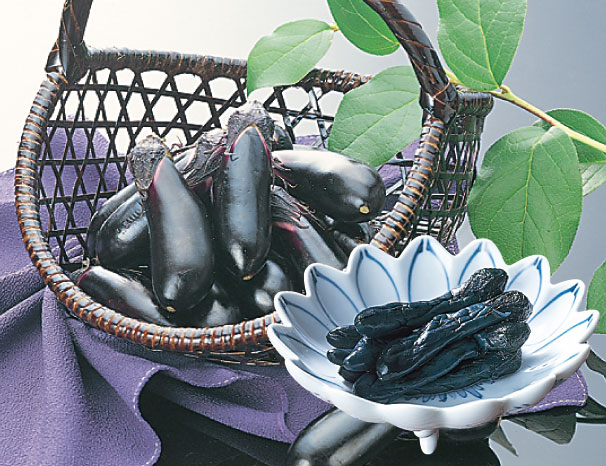
Miniature Eggplant
(Konasu)
Their soft skin makes them perfect for pickling!
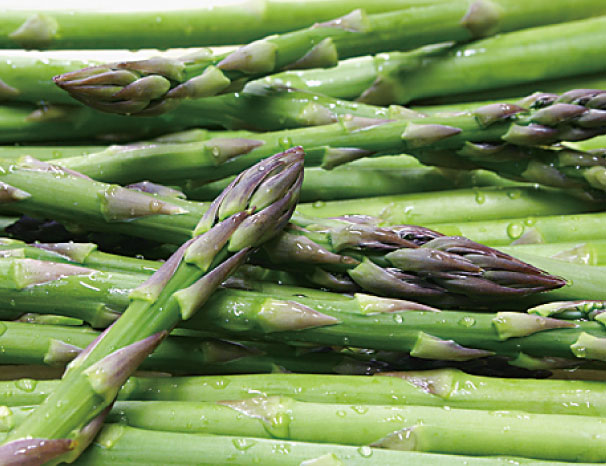
Asparagus
These healthy vegetables are a great energy boost!
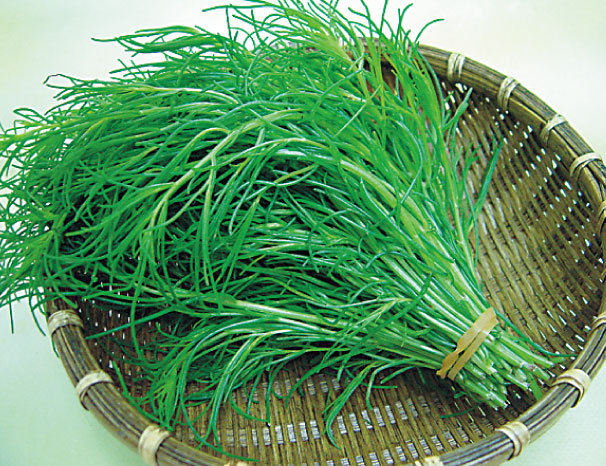
Okahijiki
(Land Seawead/Salt-Wort)
You'll fall in love with this crisp texture.
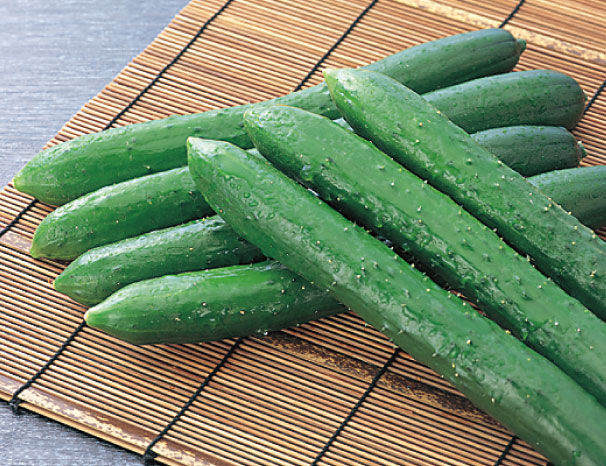
Cucumbers
Sink your teeth into these crisp cucumbers!
Enjoy the taste of freshwater and saltwater seafood.

Seema
(Cherry Salmon)
The taste of Shoai Beach in Spring.
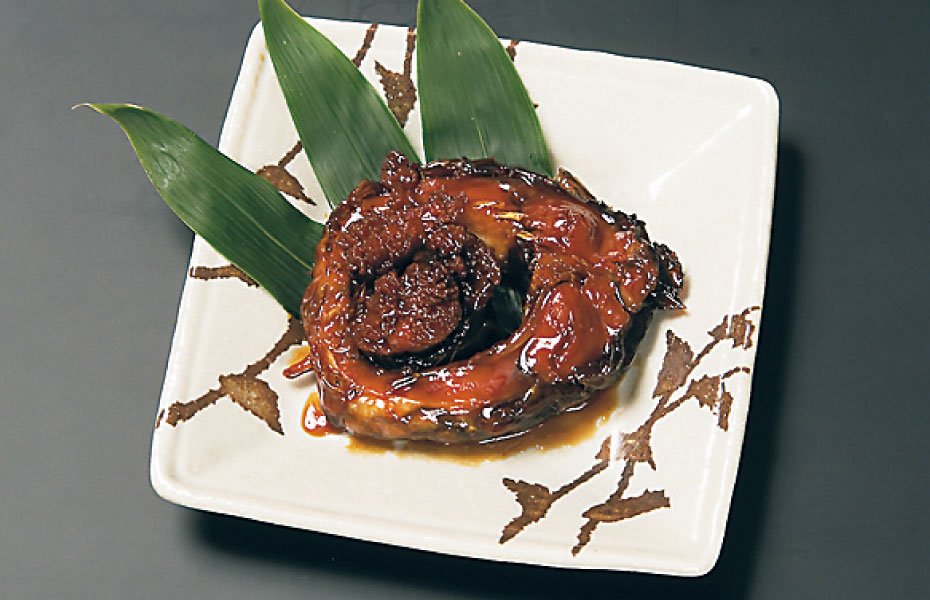
Carp
(Prepared as Umani/Sweet Simmered Carp)
Extremely nutritious!
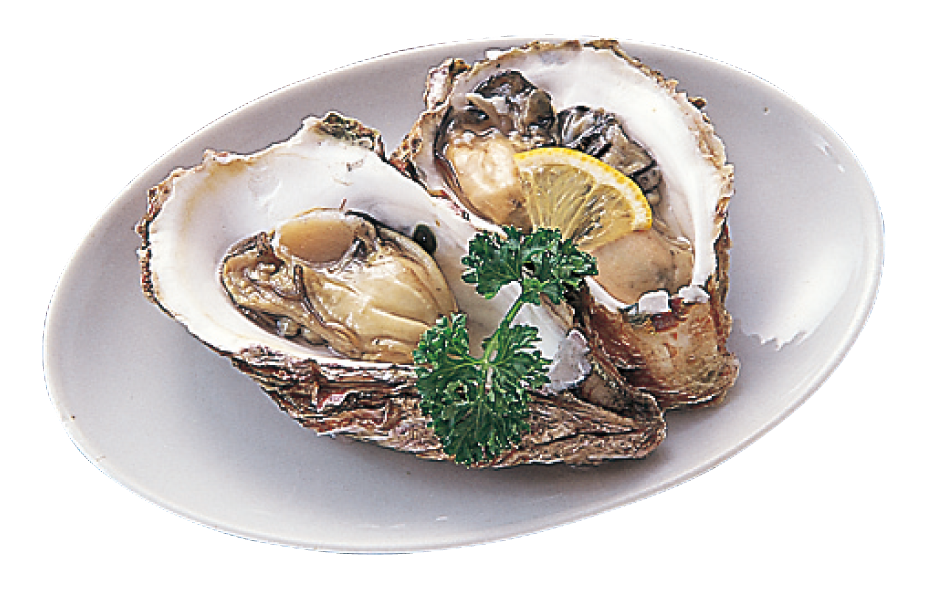
Japanese Rock Oysters
Fresh in summer from the cool, underground waters of Mt. Chokai.

River Crab
(Japanese Mitten Crab)
Kanimiso, a delicacy made from crab organs, is mellow and extremely rich.
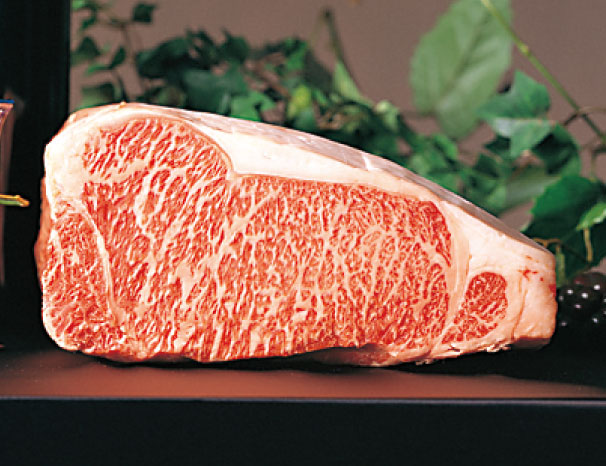
Yamagata Beef
(Steak and Grilled Meat)
The fine marbling of this prime quality beef comes from pedigree.
Features
The delicious flavor of Yamagata's beef is, ultimately, the result of the environment in which the cattle are fattened.Yamagata has extremely hot summers and cold winters, and the difference in temperature between day and night is vast, Because the cattle are raised with utmost care in these conditions. the meat has exquisitely thin marbling. Make sure to try this delicious and deeply satisfying beef.
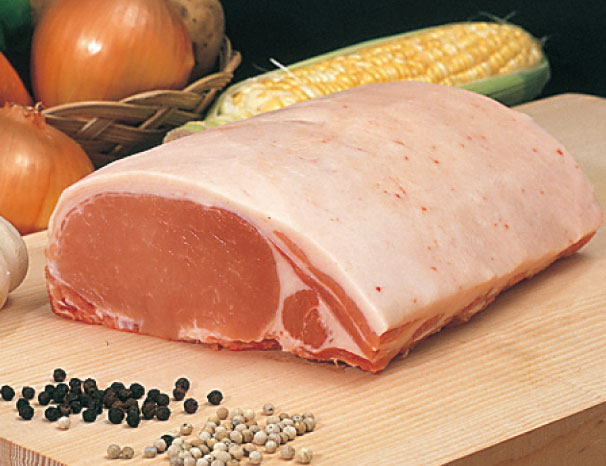
Yamagata Pork
Safe, healthy, and delicious pork.

Yamagata Free Range Chicken
A delicious, full bodied, and elegant taste.
These carefully cultivated flowers bring each of the four seasons to life with their vibrant colors.

Rose
The queen of flowers, beautiful and colorful.
The best season
Year round
Features
With their charms lying in the colorful and elegantly shaped flowers and rich fragrance, roses are used for several occasions, such as gift-giving and the making of flower arrangements for decoration.
Yamagata Prefecture, which grows roses mainly during summer and autumn, is ranked third in Japan’s rose production(2020).
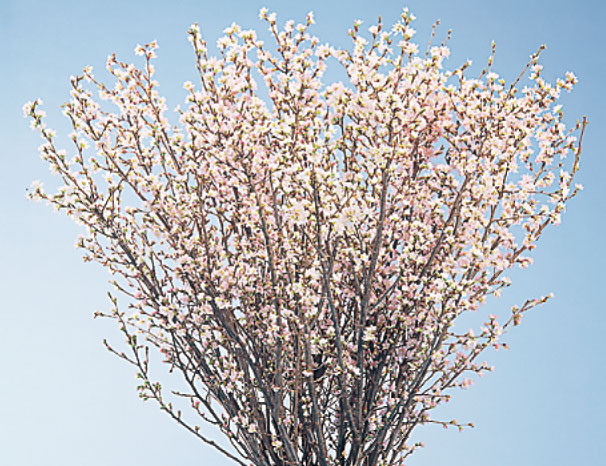
Keiozakura
(Cherry Blossom)
Even during the winter snow, this indoor plant is in full bloom.
The best season
late December – March
Features
Benefiting from the early advent of autumn and technology to regulate flowering, Keio-zakura cherry blossoms in Yamagata Prefecture come out even in the middle of winter.
All of the blossoms being in full bloom on the supple branches is nothing but gorgeous scenery. Savor the early coming of spring in Yamagata.
Yamagata Prefecture produces more Keio-zakura trees than any other prefectures in Japan.
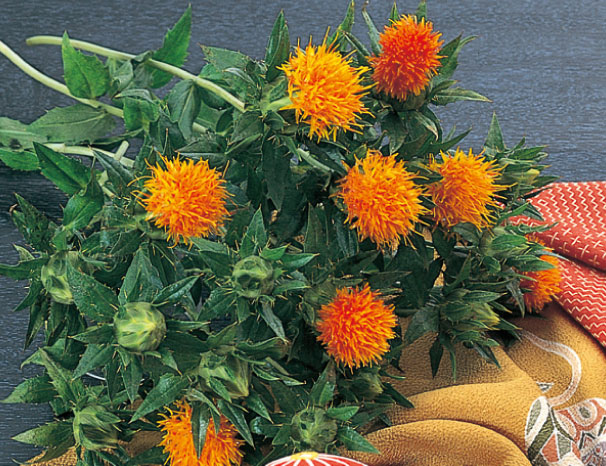
Safflower
This soothing flower came to Yamagata by way of the silk road.

Alstroemeria
(Peruvian Lily)
Cute and colorful.
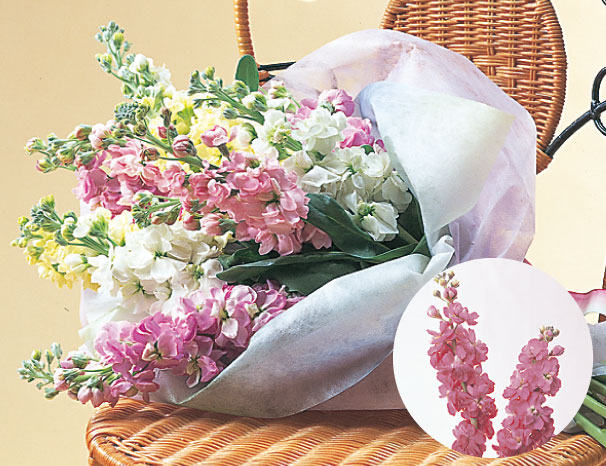
Matthiola
(Stock)
This flower's sweet fragrance hangs in the air.
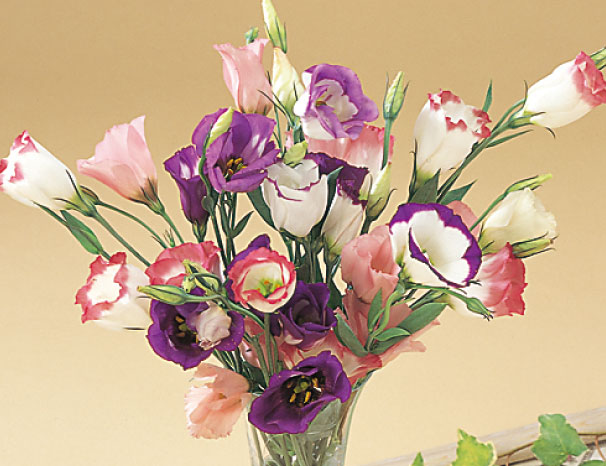
Eustoma
(Prairie Gentian)
A long living plant with vivid colors.
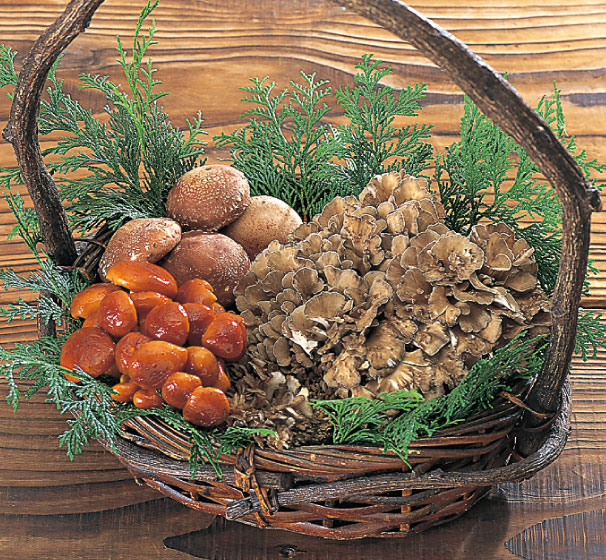
Log Cultivated Shiitake
Grown using logs from Yamagata, creating an environment similar to wild mushrooms.
Nameko
Cultivated on logs and in mushroom beds, this mushroom's delocious flavor is the pride of Yamagata.
Maitake
If you find one of these, you just might dance with joy.
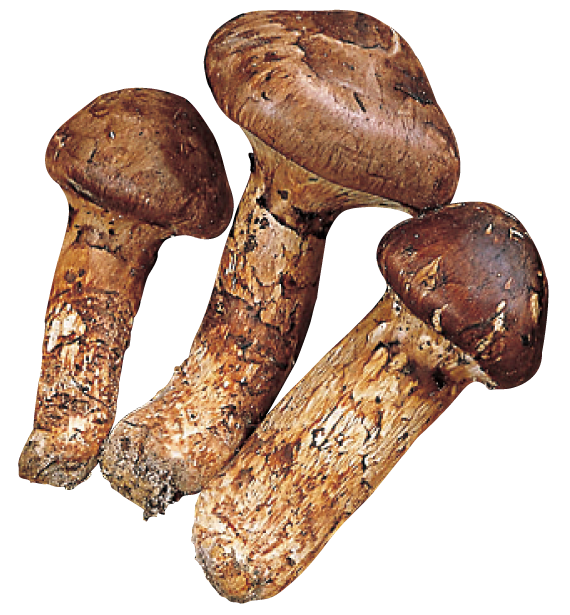
Matsutake
Mushroom hunters are always on the lookout for matsutake, the king of mushrooms.
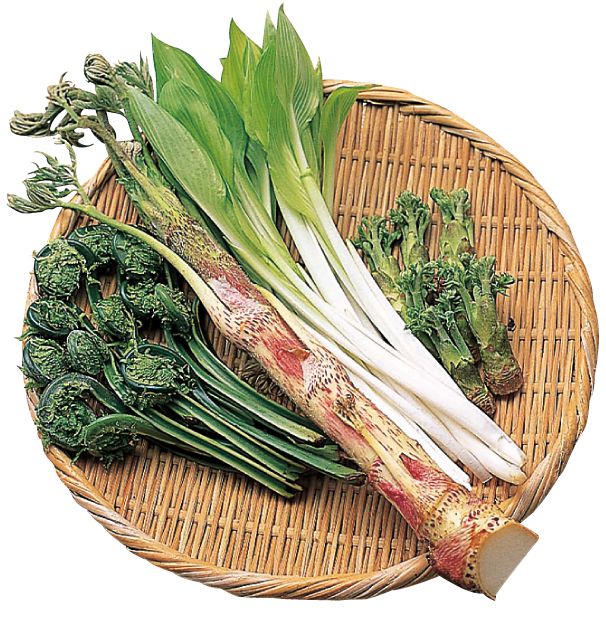
Hosta(Urui)
An exciting new vegetable experience.
Japanese Angelica Tree Shoots(Taranome)
Fry this in a tempura dish to enjoy the taste of early spring.
Ao-Kogomi(Ostrich Fern)
Perfect for goma-ae salad with sesam’ea dressing!
Udo(Japanese Asparagus/Japanese Spikenard)
Make sure you get a whiff of their delicious scent.
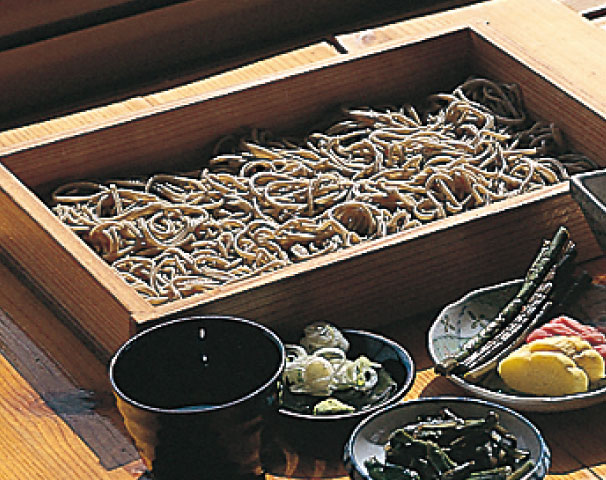
Dewa Kaori and Other Fresh Soba
A unique type of soba from Yamagata, the soba kingdom.
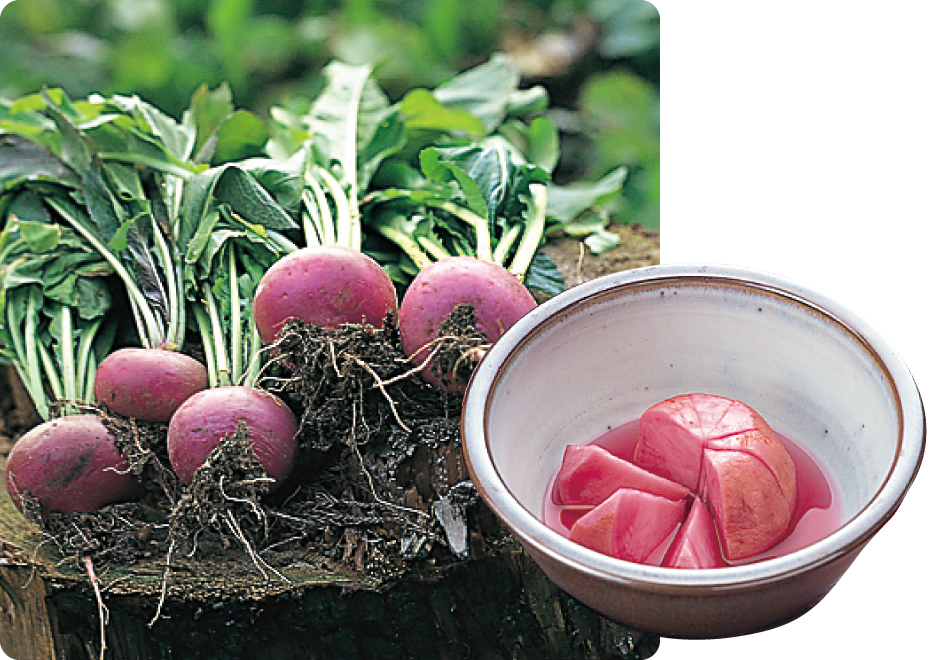
Red Turnip
(Atsumi-kabu)
Cultivated using traditional slash and burn agricultural methods.
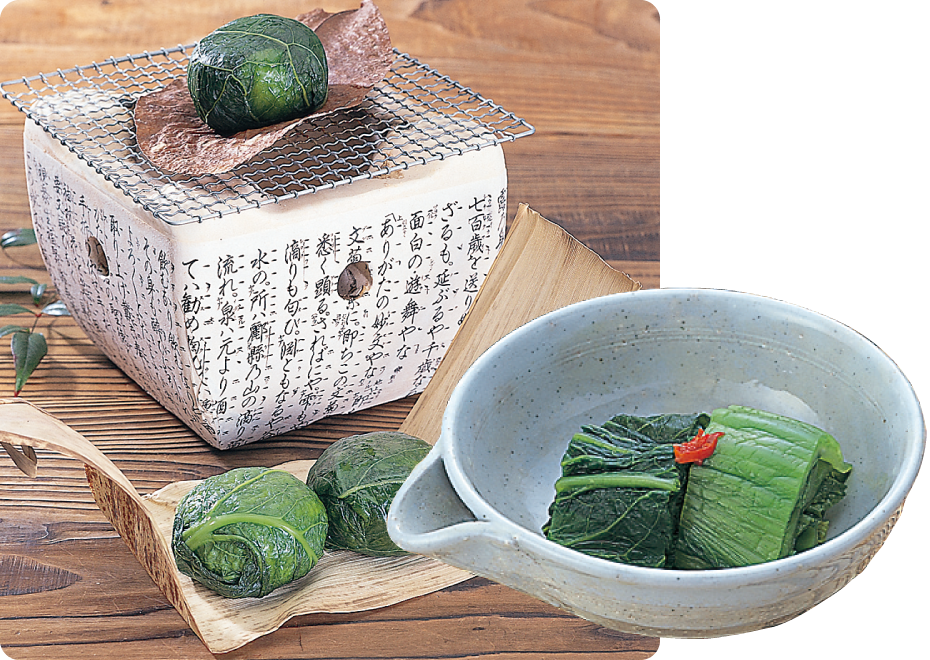
Seisaizuke
(Pickled Mustard Greens)
Delicious with freshly cooked rice!
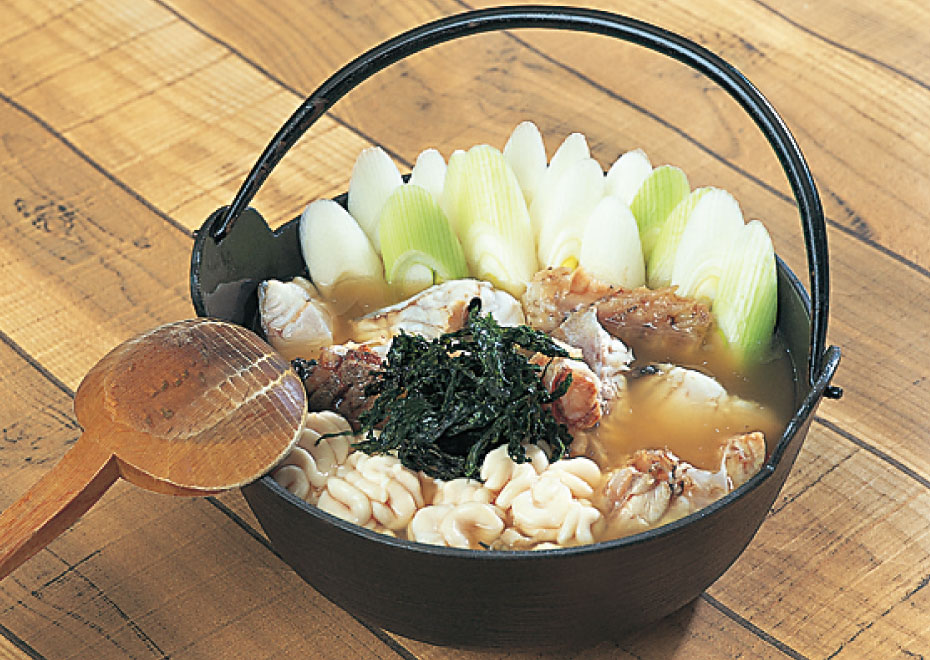
Pacific Cod
(Dongarajiru/Cod Stew)
This tastes great in winter! It's the king of winter flavor from the Sea of Japan!
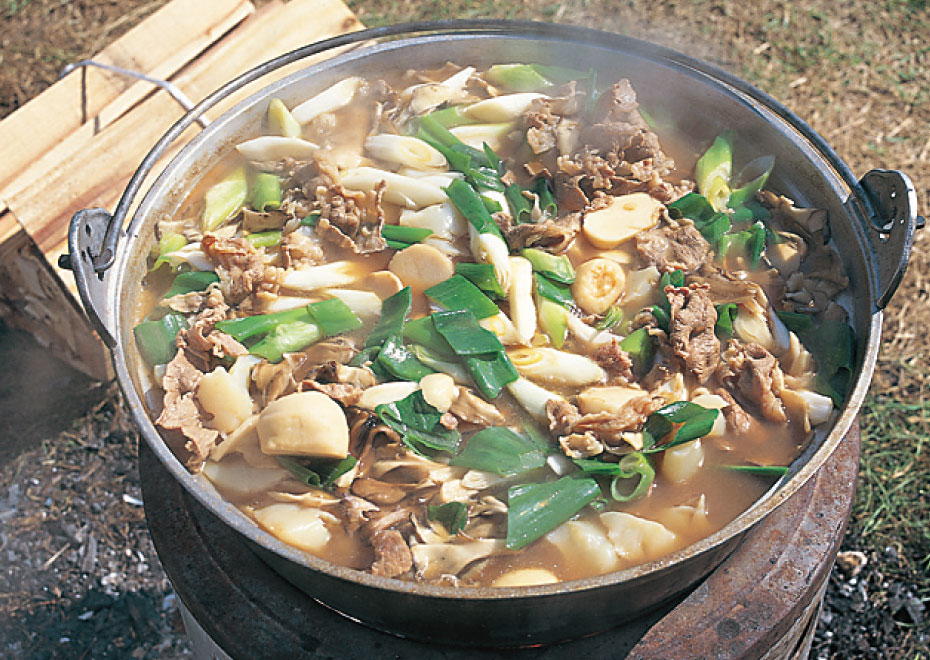
Imoni Nabe
(Taro Root Stew)
There are countless ways to prepare and enjoy Yamagata's very own original taro root stew.













